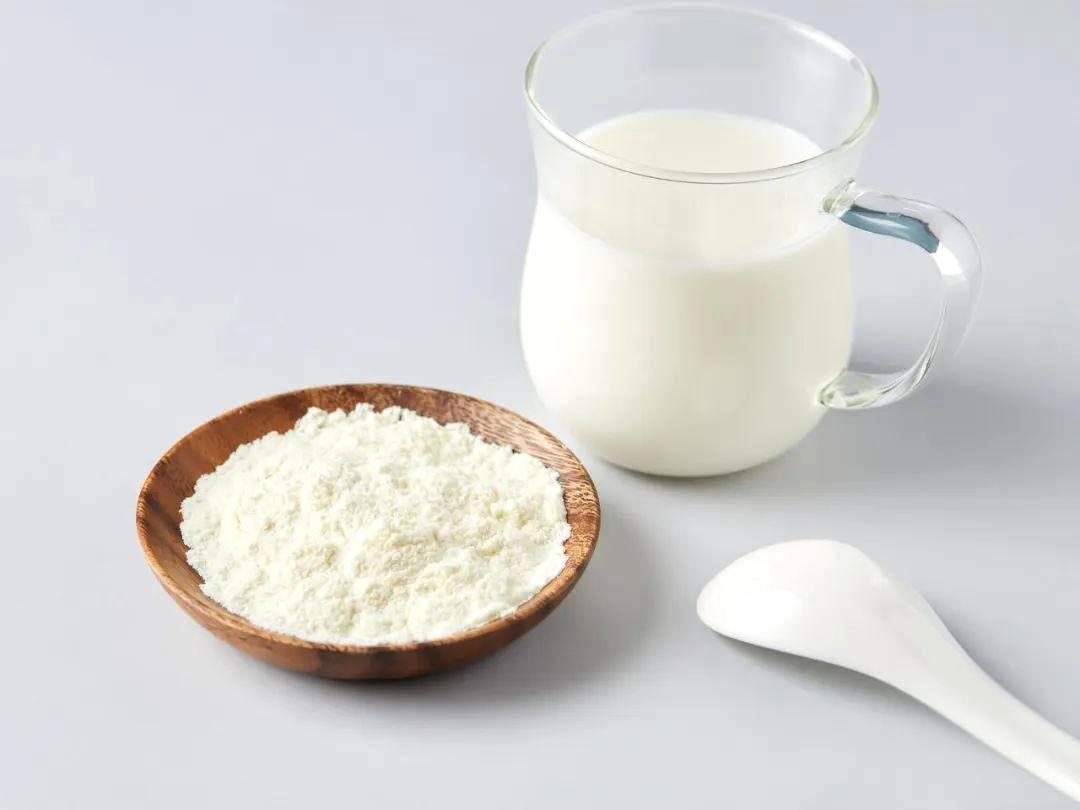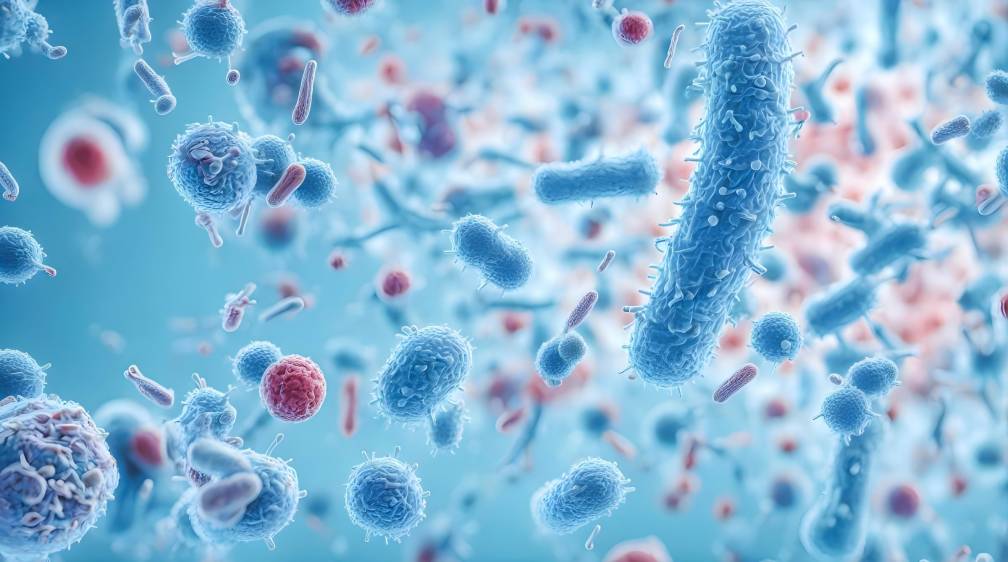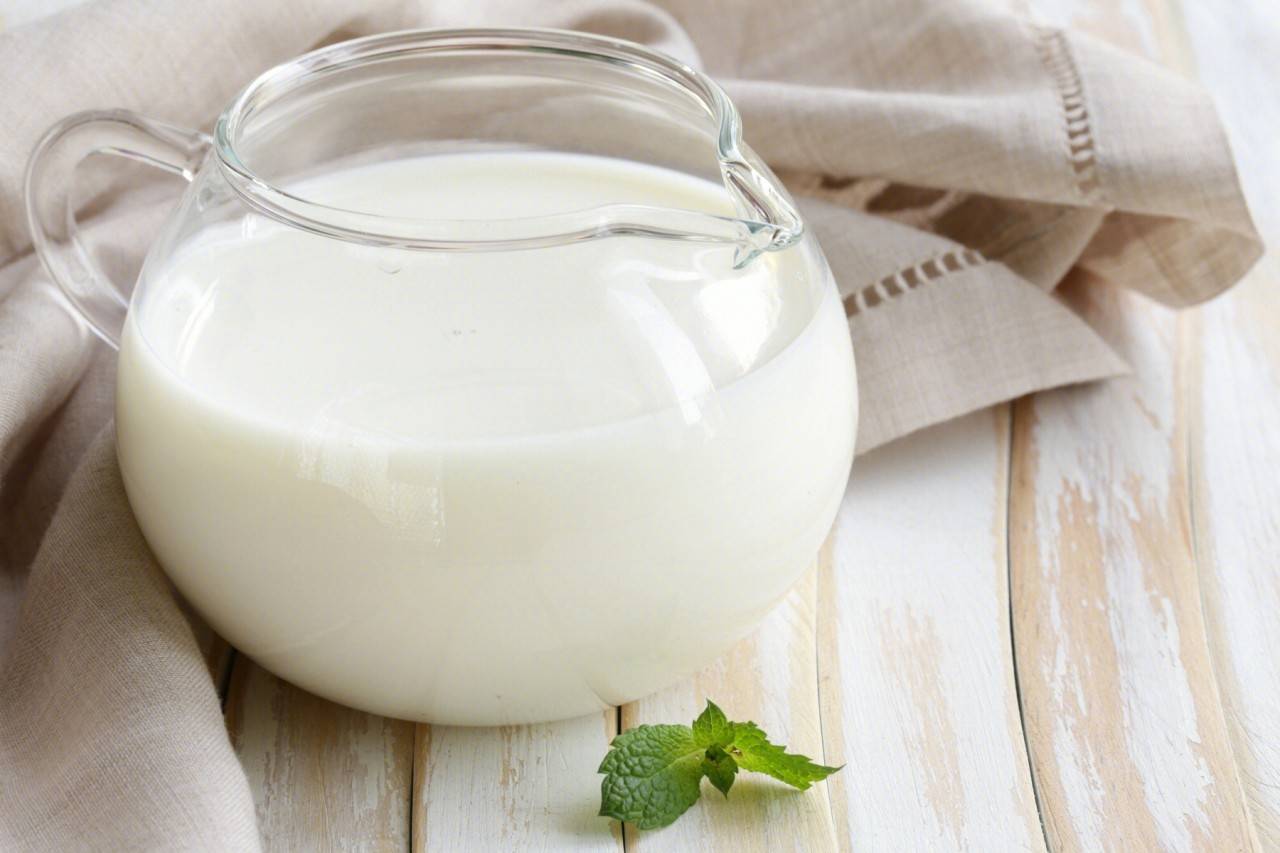What Is the Production Method of Galacto Oligosaccharides?
Galactooligosaccharides (GOS) are a new type of functional substance. They are a type of functional oligosaccharide with natural properties and an important prebiotic in breast milk[1]. It is found in high concentrations in breast milk, and has good palatability, water solubility and stability. When ingested, it can increase the growth of beneficial bacteria in the human gut, especially bifidobacteria, while also inhibiting the growth of putrefactive bacteria. Oligosaccharides are widely used in the condiment industry. Due to their special physical and chemical properties and functions, they are widely added to beverages, dairy products and baked goods.
They can not only regulate the flavor of food, but also play a role in nourishing beneficial bacteria. While the beneficial bacteria in the intestine proliferate using oligosaccharides, they also produce a large amount of extracellular polysaccharides. Extracellular polysaccharides not only have antitumor and immunomodulatory activities, but also promote the long-term colonization of probiotics in the intestine. Thus, they have various effects, such as reducing the concentration of total cholesterol in the blood, improving lipid metabolism in the body, and promoting the absorption of minerals. They also have preventive and therapeutic effects on diseases such as Alzheimer's disease, diabetes, Parkinson's disease, depression, and obesity. Due to its functional properties, oligosaccharides have become a research hotspot for modern development and application.
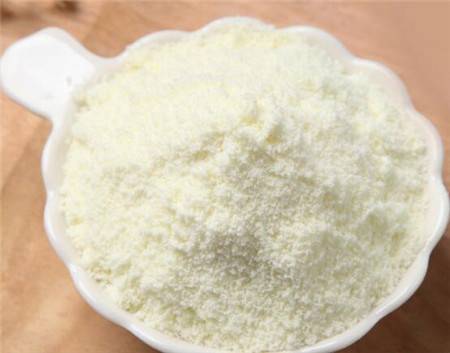
This article mainly summarizes oligosaccharides from the aspects of preparation technology, separation and purification, and application status, and looks ahead to its key research directions to support the wide application of GOS.
1 Progress in production technology
There are five methods for preparing GOS: (1) natural extraction: extracting oligosaccharides from natural substances is costly, the yield is low, and the separation is difficult; (2) acid hydrolysis of polysaccharides: the conversion rate is low and purification is difficult; (3) chemical synthesis: highly toxic and causes serious pollution; (4) fermentation: there is little research on the process and separation and purification is difficult; (5) enzymatic synthesis: the cost is relatively low, and is currently the most widely used preparation method [2]. The basic production principle of enzymatic synthesis is to use lactose as the main raw material and obtain it by using β-galactosidase to carry out transglycosidation. However, in recent years, by studying and optimizing various aspects of the production process, such as the immobilization of β-galactosidase, more efficient production routes have been obtained to produce galacto-oligosaccharides.
1.1 Selection and breeding of enzyme-producing strains
β-Galactosidase is the key enzyme in the production of galacto-oligosaccharides. Its main sources are animals (milk), plants (apples, etc.) and microorganisms (yeasts, molds, etc.) in nature. Most of the β-galactosidase used in industrial production is extracted from microorganisms. Strain selection has become a hotspot of engineering research.
Wang Xin et al. [3] used the artificial substrate o-nitrophenyl-β-D-galactopyranoside (ONPG) as a screening marker in 2015 to select from a library of microorganisms resistant to organic solvents, β-galactosidase-producing bacteria with high hydrolytic activity. Lactose was then used as a substrate to investigate the synthesis performance, and a strain of Erwinia billingiae WX1 producing β-galactosidase was selected. The β-galactosidase gene was cloned and the β-galactosidase gene gal was obtained by predicting the β-galactosidase gene based on the genome sequence of the same species in GenBank. At the same time, the cloned expression of β-galactosidase was achieved in Escherichia coli. In 2016, Li Meiling et al. [4] obtained β-galactosidase enzyme liquid through the fermentation of B. circulans SK28.003, and prepared enzyme powder by concentration, salting-out precipitation and low-temperature freeze-drying. The β-galactosidase's transglycosidase function is used to catalyze the synthesis of lactose into oligosaccharides. The optimal synthesis conditions were determined using single factor and orthogonal experiments, and were evaluated using high performance liquid chromatography. The optimal synthesis conditions were determined using single factor and orthogonal experiments, and were evaluated using high performance liquid chromatography.
The optimal synthesis conditions were determined using single factor and orthogonal experiments, and were evaluated using high performance liquid chromatography. The optimal synthesis conditions were determined using single factor and orthogonal experiments, and were evaluated using high performance liquid chromatography.
The optimal synthesis conditions were determined using single factor and orthogonal experiments, and were evaluated using high performance liquid chromatography. The optimal synthesis conditions were determined using single factor and orthogonal experiments, and were evaluated using high performance liquid chromatography. Under these conditions, the GOS yield can reach 45.5% after reacting for 12 hours.
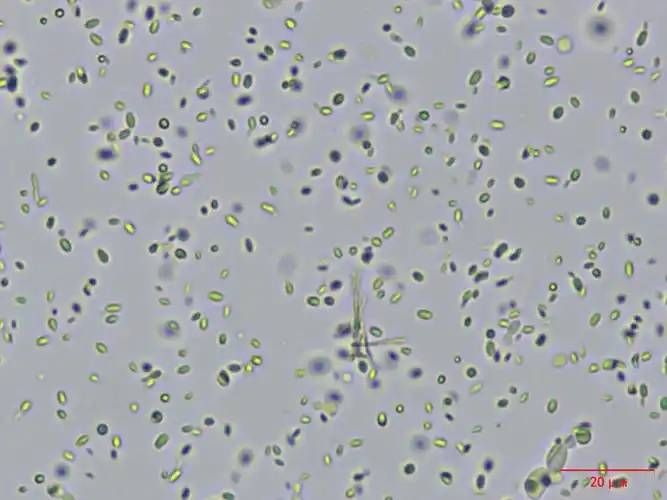
1.2 Immobilization of β-galactosidase
Immobilized enzymes have been widely studied and used because of their advantages such as high reusability and good thermal stability. In recent years, there have been reports of research on the immobilization of β-galactosidase. In 2014, Zhang Fenghua et al. [5] conducted a comparative study of β-galactosidase immobilization materials and concluded that the thermal stability of enzymes immobilized on amino carriers was significantly higher than that of free enzymes and enzymes immobilized on epoxy carriers. After 20 reuse cycles, the enzyme activity was still maintained at more than 60%.
Using a starting concentration of 300 g/L lactose, the enzyme immobilized on the amino carrier was used to produce galactooligosaccharides, with a maximum yield of 87 g/L. In 2015, Fei Junjie's research showed that β-galactosidase was immobilized on ion exchange resin I002 by a method of first adsorption and then cross-linking, with an enzyme amount of 51.8 U (per 1 g of resin), pH 6.5, temperature 25 °C, adsorption time 12 h, and glutaraldehyde volume fraction 4%. 8U (per 1 g of resin), pH 6.5, temperature 25 °C, adsorption time 12 h, glutaraldehyde volume fraction 4%, crosslinking temperature 40 °C, time 6 h, the immobilization effect was the best. The obtained fixed enzyme activity can reach 16.2 U, the recovery rate of the fixed enzyme is 39.1%, and the yield of galacto-oligosaccharides (GOS) is 24.2%.
In 2016, Liu Xinlong et al. [6] studied the process of synthesizing galacto-oligosaccharides using chitosan-adsorbed and glutaraldehyde-crosslinked immobilized galactosidase as a catalyst, and optimized the reaction conditions. The experimental results showed that the optimal reaction conditions were a substrate of 50% lactose by mass, a solution pH of 6.5, a reaction temperature of 40 °C, the addition of 2 mmol/L Mg2+ to the system, an enzyme dosage of 640 g/L, and a reaction time of 4 h. The yield of oligosaccharides was 71.5%. 5%. After being reused 7 times, the yield of GOS obtained by catalysis was still 64.9%, showing good stability.
1.3 Optimization of production process conditions
After industrial production of oligosaccharides has become a research hotspot, a large number of researchers have fully optimized some of the process conditions in the production of oligosaccharides, making the production process of oligosaccharides more efficient and lower in cost.
In 2015, Xing Xiao et al. [7] optimized the production process and concluded that the optimal process conditions for preparing galacto-oligosaccharides were 37 °C, pH 8.0, K+ 0. 08mol/L, initial lactose mass concentration 500 g/L, reaction time 5h, enzyme addition amount 10 μL/g lactose. Under these conditions, the mass concentration of generated oligosaccharides reached 94.74 g/L. In 2016, Fu Wenjia et al. [8] further concluded that the optimal reaction conditions were a substrate (lactose) concentration of 50%, an enzyme amount of 40 U/g, pH 7.5, and 50 °C. The reaction was carried out under these conditions for 2 h, and the yield of oligogalactose was 23.4%.
1.4 Development of new production technologies
Some researchers are not limited to the existing production technologies, and have come up with some new production processes through extensive research and experimentation, providing more options for large-scale industrial production of oligosaccharides. In 2016, Wei Chun et al. from Zhejiang University of Technology [9] used lactose as a substrate and used permeabilized cells of Lactobacillus plantarum containing β-galactosidase to catalyze the production of oligosaccharides.
Anaerobic fermentation was carried out in a 5L fermenter, and the harvested Lactobacillus plantarum cells were all used in the study of permeabilized whole-cell catalysis to produce GOS. It was found that the maximum yield of GOS was 32% (mass fraction) under the conditions of a lactose mass concentration of 400 g/L, an initial pH of 7.0, a temperature of 50 °C and a reaction time of 10 h. Patent CN200810157830. X A process for producing galacto-oligosaccharides using recombinant Saccharomyces cerevisiae has been developed. First, a surface display vector for β-galactosidase was constructed, and then β-galactosidase was displayed on the cell surface of Saccharomyces cerevisiae. Finally, the recombinant yeast was used to ferment lactose to produce galacto-oligosaccharides [10].
2. Advances in purification and separation technology
The oligosaccharides produced by enzymatic methods are complex, containing many non-effective ingredients such as glucose and lactose that have not been catalysed by the enzyme. This results in the oligosaccharides produced being of low purity, reducing their functionality and making them less useful. Therefore, it needs to be purified and separated by some means to expand its scope of application [11]. At present, the main separation and purification methods are column chromatography, membrane separation, biological methods and enzymatic methods [12].
2.1 Column chromatography
The principle of column separation is that the binding forces between the components to be separated and the stationary phase and mobile phase are different, thereby achieving the separation effect. The components with strong binding forces will flow out slowly, while those with weak binding forces will flow out quickly. The advantages of column separation are that it can be operated continuously in a cycle, and the adsorbent can be reused. However, this method has low separation efficiency and complex preliminary operations [13]. In 2009, Feng Yongmei et al. [14] used a dextran gel column, Sephadex G-25, to purify and separate crude oligosaccharides. The experiment showed that the purity of GOS can reach 85.03% with a single column, and 89.39% after a second column.
2.2 Membrane separation method
The basic principle of the membrane separation method is to control the outflow of molecules through the pore size of the membrane. Molecules with large molecules are retained in the membrane, and molecules with small molecules flow out, thus achieving the purpose of separation and purification. The advantage is that the separation effect is good and the activity of the enzyme is not affected. The disadvantage is that the membrane is easily contaminated and substances with similar molecular weights are difficult to separate [15]. Goulas A K et al. [16] passed a mixture of oligosaccharides through NF-CA-50 (25 °C) and DS-5-DL (60 °C) membranes in sequence, and the purity of GOS reached 98%. Feng Y M et al. [17] used an NF-3 membrane (retaining substances with a relative molecular mass of 800–1000 u) to purify and separate crude low-molecular-weight galactose, increasing the GOS purity by about 1.5 times.
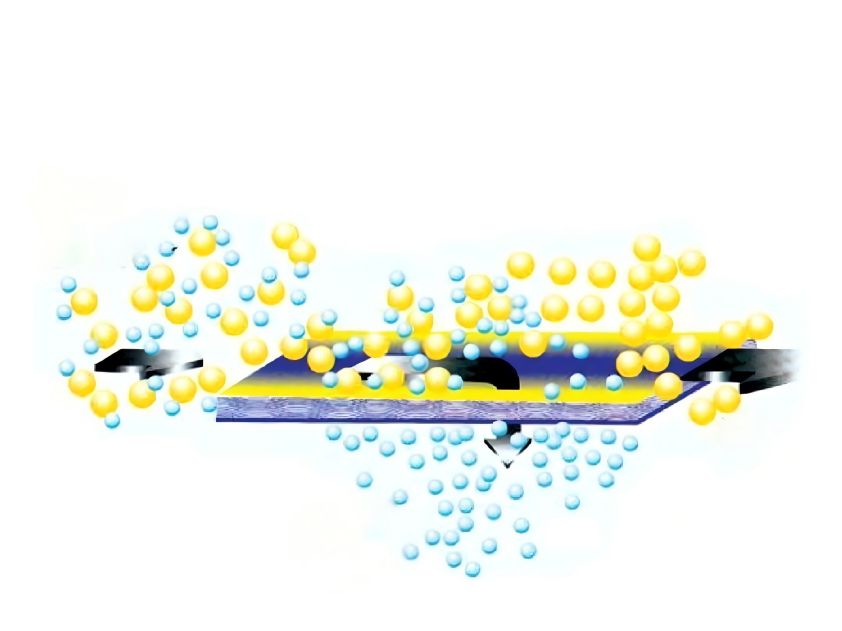
2.3 Biological and enzymatic methods
The biological method uses microbial fermentation to remove miscellaneous sugars from the mixture. For example, glucose and lactose can be removed using yeast and lactic acid bacteria [18]. The disadvantages are that the process is time-consuming and complicated, and it can introduce other substances that are difficult to remove [19]. The enzymatic method involves adding various specific enzymes to remove the corresponding miscellaneous sugars through enzymatic decomposition. The disadvantages are more obvious. The enzymes are expensive and the amount added is difficult to determine. In addition, as the enzymatic reaction occurs, the pH of the system will decrease, which will affect the activity of the enzyme[20] , and the separation effect is poor[21]. The biological method and the enzyme method are less commonly used, and there have been fewer reports on these two methods in recent years.
2.4 New purification techniques
In 2016, Li Liangyu et al. [22] used crude oligosaccharides as raw materials and purified the raw materials using a self-made simulated moving bed (SMB) and sequential simulated moving bed (SSMB) device, respectively. Optimal technical parameters: feed refractive index 60%, column temperature 60°C, feed rate 467mL/h, water input 722.4mL/h. Under these conditions, the purity of oligosaccharide galactose was 95.1%.
3. Advances in application
As science continues to develop, substances are constantly being researched and developed, resulting in the reporting and mass production of beneficial ingredients in foods to meet people's nutritional needs. These include oligosaccharides, which are found in breast milk. Research has shown that oligosaccharides can promote the repair of intestinal mucosa[23], promote the growth and colonization of beneficial bacteria such as bifidobacteria in the intestine, improve human immunity[24], promote the growth and development of infants and young children[25, 26], lower cholesterol and inhibit osteoporosis[27], and other functions. Because of these functions, galacto-oligosaccharides have a preventive and therapeutic effect on a number of diseases, such as obesity, Alzheimer's disease, diabetes, Parkinson's disease, depression, etc., and there have been many related reports in recent years. Therefore, galacto-oligosaccharides have a wide range of applications in foods, health products, and pharmaceuticals.
3.1 Food applications
Due to its special physical and chemical properties and physiological functions, galacto-oligosaccharides are widely used in the condiment industry, such as in beverages, candy, baked goods, jams, milk powder, and pet food. GOS is added to dairy products because of its good solubility and because it is known to be a growth factor for bifidobacteria. This makes the resulting milk powder more similar to breast milk, ensuring that the intestinal flora of infants fed formula is the same as that of infants fed breast milk, thereby promoting the growth and development of infants. It can also meet the nutritional needs of some people with lactose intolerance. It is added to drinks because it has high solubility, good stability, good palatability, low cariogenicity and the functionality of GOS is not destroyed. An important factor in adding it to yogurt is that GOS is not destroyed by lactic acid bacteria and can still exert its function. GOS is added to baked goods because it is heat-resistant and stable, and will not be destroyed by high-temperature baking. The widespread use of galacto-oligosaccharides in the condiment industry has boosted the entire functional polysaccharide industry.

3.2 Health product applications
As people's living standards improve and their knowledge grows, they are becoming less satisfied with obtaining nutritional factors from food alone. Therefore, the emergence of health products has met people's needs. Health products are a polymer of one or more nutrients. They are highly pure, have a high content, and can satisfy the daily requirement with just one tablet. It is precisely because of these characteristics that they are widely used. Due to its many functions, GOS is known as a type of functional oligosaccharide and is widely produced into various health products to enhance human immunity.
3.3 Pharmaceutical applications
GOS has physiological functions that can prevent and treat some diseases, so it is also used in medicine. Galacto-oligosaccharides can be utilized by beneficial bacteria in the intestine, which then use carbohydrates to produce short-chain fatty acids. This inhibits cholesterol synthesis in the liver, thereby redistributing serum cholesterol to the liver and reducing blood cholesterol. In 2015, Xin Yueqiang et al. [28] found that galacto-oligosaccharides can promote the production of more extracellular polysaccharides by Lactobacillus plantarum and Bifidobacterium. Extracellular not only has anti-tumor activity and immune activity, but also promotes the long-term colonization of probiotics in the intestine. Since many foreign reports have shown that changes in the intestinal flora environment may lead to the occurrence of many diseases, such as Alzheimer's disease, Parkinson's disease, depression, obesity, etc., oligosaccharides that can regulate the intestinal flora have received increasing attention [29, 30].
4 Conclusion and outlook
The normal human intestine is colonized by a complex community of bacteria with thousands of species and a very large population. They work in an orderly manner. They have multiple effects on the human body, such as immunity, nutrition and biological antagonism. In recent years, due to the abuse of antibiotics, excessive mental stress and environmental changes, the intestinal flora has become imbalanced, becoming the number one threat to public health.
Over the years, many reports have confirmed that changes in the intestinal flora are closely related to human health. The occurrence of diseases such as Parkinson's disease, depression, Alzheimer's disease and diabetes are directly related to changes in the intestinal flora. The widespread use of galacto-oligosaccharides in the condiment industry can not only achieve the nutritional value and taste of the food, but is also an important direction for the development of galacto-oligosaccharides. The application of condiments also requires a lot of research. It is a more acceptable way to prevent and treat some diseases by adding galacto-oligosaccharides to food.
References:
[1] Jia Shaoting, Xing Huimin, Gui Shilin, et al. Research progress of oligosaccharides [J]. Agro-Products Processing, 2010(5): 71-73.
[2] Fei Junjie, Li Bingbing, Chen Yong, et al. Preparation of oligosaccharides by resin-immobilized β-galactosidase [J]. Bioprocesses, 2015, 13(4): 17-22.
[3] Wang Xin, Wu Bin, He Bingfang. Screening, cloning and expression, enzymatic properties of β-galactosidase and its enzymatic synthesis of oligosaccharides [J]. Bioprocesses, 2015, 13(6): 30-35.
[4] Li Meiling, Jiang Bo, Zhang Tao. Synthesis of oligosaccharides from lactose by β-galactosidase [J]. Journal of Food and Biotechnology, 2016, 35(3): 234-239.
[5] Zhang Fenghua, Sun Ning, Zhang Wei, et al. Comparative study of epoxy and amino resin immobilized β-galactosidase [J]. China Agricultural Science and Technology Report, 2014, 16(5): 47-52.
[6] Liu Xinlong, Wang Lihui, Tang Weihua, et al. Research on the catalytic synthesis of oligosaccharide galactose by immobilized galactosidase [J]. Food Engineering, 2016(1) :20-22 , 39.
[7] Xing Xiaoxiao, Qi Wei, Wang Mengfan, et al. Enzymatic properties of β-galactosidase and its application in the synthesis of oligosaccharides. Bioprocesses, 2015, 13(2):30-34.
[8] Fu Wenjia, Jiang Shujuan, Qian Fang, et al. Research on the synthesis of oligosaccharides by Lactococcus lactis beta-galactosidase [J]. Food Science and Technology, 2016, 41(6): 2-6.
[9] Wei Chun, Kong Lingmin, Liu Lifeng. Process optimization of oligosaccharide production by permeabilized cell catalysis of Lactobacillus plantarum [J]. Fermentation Science and Technology Newsletter, 2016, 45(1):18-22.
[10] Shandong University. A method for recycling recombinant Saccharomyces cerevisiae to produce oligosaccharides [P]. Chinese patent: CN200810157830. X, 2008-10-15.
[11] Liu Jianfu, Chen Qingsen, Wang Zhang, et al. Analysis of the composition of oligosaccharides synthesized by K. fragilis β-galactosidase [J]. Food and Fermentation Industry, 2005, 31(11): 109-111.
[12] Lu Lili, Li Zhengyi, Xiao Min. Recent advances in microbial enzymatic synthesis of galacto-oligosaccharides [J]. Acta Microbiologica Sinica, 2008, 48(7): 980-985.
[13] Ziegler A, Zaia J. Size-exclusion chromatography of heparin oligosaccharides at high and low pressure [J]. J Chromatogr B, 2006, 837(1-2):76-86.
[14] Feng Yongmei, Chang Xiulian, Wang Wenhua, et al. Separation of oligosaccharides by gel filtration chromatography with dextran[J]. Journal of Beijing University of Chemical Technology (Natural Science Edition), 2009, 36 (1):73-76.
[15] Shou Hongzhi, Xie Guangfa, Ling Zhiyong, et al. Discussion on the application of membrane separation technology in the brewing industry [J]. China Brewing, 2007, 26(3): 58-60.
[16] Goulas A K , Kapasakalidis P G , Sinclair H R , et al. Purification of oligosaccharides by nanofiltration[J] . J Membrane Sci , 2002 , 209(1) :321-335.
[17] Feng Y M, Chang X L, Wang W H, et al. Separation of galacto-oligosaccharides mixture by nanofiltration [J]. J Taiwan Inst Chem Eng, 2009, 40(3): 326-332.
[18] Pan Binye, Gao Yanling, Ouyang Yi, et al. Purification of oligosaccharides from wine yeast [J]. China Dairy Industry, 2011, 39(8): 8-10.
[19] Yuan QP, Ma RY, Zhang X. Study on the fermentation method for refining soybean oligosaccharides [J]. Bulletin of Microbiology, 2001, 28(6): 56-59.
[20] Splechtna B, Petzelbauer I, Baminger U. Production of a lactose-free galacto-oligosaccharide mixture by using selective enzymatic oxidation of lactose into lactobionic acid. Enzyme Microb Tech, 2001, 29(6-7): 434-440.
[21] Maischberger T, Nguyen T H, Sukyai P, et al. Production of lactose-free galacto-oligosaccharides mixtures: comparison of two cellobiose dehydrogenases for the selective oxidation of lactose to lactobionic acid[J]. Carbohydr Res, 2008, 343(12): 2140-2147.
[22] Li Liangyu, Jia Pengyu, Li Chaoyang, et al. Simulated mobile chromatography for efficient purification of oligosaccharides[J]. Chinese Journal of Food Science, 2016, 16(3): 138-145.
[23] Duan Y, Zhang F, Shan D, et al. Effects of prebiotic supplementation on occludin, a tight junction protein, in the intestinal mucosa of rats with altitude sickness[J]. Chinese Journal of Microecology, 2011, 23(5):390-392, 397.
[24] Rosell S, Axelrod J. Galactooligosaccharide supplementation reduces stress-induced gastrointestinal dysfunction and days of cold or flu: a randomized, double-blind, controlled trial in healthy university students [J]. American Journal of Clinical Nutrition, 2011, 93(6):1305-1311.
[25] Lu Yadong, Ben Xiaoming, Yu Wenliang, et al. Research on the improvement of infant intestinal microecology and fermentation by adding galactose-oligosaccharides to formula milk [J]. Modern Medicine, 2007, 35(6): 423-427.
[26] Wang Fang, Huang Zhe, Zhang Lei. Growth and development of infants fed with formula milk containing oligosaccharides [J]. Practical Medical Technology Journal, 2004, 11(14): 1891-1892.
[27]ChonanO,Matsumoto K,Watanuki M. Effect of galactoologosaccharides on calcium absorption and preventing bone loss in ovariectomized rats[J] . Biosci Biotech Biochem, 1995 , 59(2):236-239.
[28] Xin Yueqiang, Liang Rongrong, Wang Ruiming. Research on the effect of oligosaccharides on the production of extracellular polysaccharides by intestinal probiotics [J]. Biotechnology Bulletin, 2015, 31(6): 144-150.
[29] Li Tongju, Jia Dexian, Zhao Yang, et al. Gut flora and Alzheimer's disease [J]. International Journal of Pharmaceutical Research, 2016, 43(1): 15-19, 32.
[30] Shen Dingshu. Intestinal microecology and obesity [J]. Chinese Journal of Microecology, 2012, 24(1): 91-93.


 English
English French
French Spanish
Spanish Russian
Russian Korean
Korean Japanese
Japanese